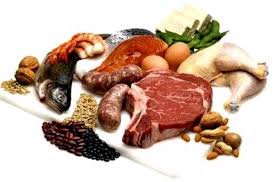Purines are essential for life. They include hypoxanthine, guanine, adenine, and xanthine. Together with pyrimidines, the first four purines make up the genetic codes RNA and DNA. They also help make energy molecules such as GTP, ATP, and coenzyme A. Purines are found in all animal and plant cells.

Foods High in Purines Charts
It is true that almost everything you eat has purines, but certain foods contain more as compared to the others. The chart will definitely help you make better food choices:
|
Meat (100 g / 3.5 oz.) |
Purine (mg) |
|
Sweetbreads |
525 |
|
Mutton Saddle |
81 |
|
Veal Kidney |
88 |
|
Veal Liver |
182 |
|
Beef Heart |
107 |
|
Pork Liver |
125 |
|
Pork Shoulder |
83 |
|
Pork Kidney |
139 |
|
Roast Hare |
71 |
|
Rabbit |
60 |
|
Lean Beef |
58 |
|
Bovine Kidney |
112 |
|
Lean Lamb |
76 |
|
Mutton Chop |
61 |
|
Fish Products (100 g / 3.5 oz.) |
Purine(mg) |
|
Anchovies |
108 |
|
Bow with Skin |
100 |
|
Caviar |
60 |
|
Bow (Skinless) |
60 |
|
Tuna in Oil |
121 |
|
Smoked Sprat |
223 |
|
Skinless Sardines |
88 |
|
Smoked Salmon |
100 |
|
Shellfish and Crustaceans (100 g / 3.5 oz.) |
Purine(mg) |
|
Shrimp |
61 |
|
Mussel |
154 |
|
Lobster |
73 |
|
Fish (100 g / 3.5 oz.) |
Purine(mg) |
|
Herring |
79 |
|
Pike |
58 |
|
Trout |
83 |
|
Mackerel |
60 |
|
Salmon |
68 |
|
Halibut |
123 |
|
Sardine |
144 |
|
Redfish |
100 |
|
Mackerel skinless |
75 |
|
Mackerel (with skin) |
167 |
|
Herring Roe |
79 |
|
Herring Fillet |
88 |
|
Tuna |
107 |
|
Sole |
55 |
|
Plaice (Skin intact) |
71 |
|
Cord |
63 |
|
Poultry (100 g / 3.5 oz.) |
Purine(mg) |
|
Pheasant |
62 |
|
Duck |
64 |
|
Chicken (with Skin) |
125 |
|
Roasted Chicken Leg |
98 |
|
Chicken Liver |
101 |
|
Goose |
69 |
|
Legumes and Soybeans (100 g / 3.5 oz.) |
Purine(mg) |
|
Soybean Flour |
123 |
|
Peek |
84 |
|
White Beans |
75 |
|
Peas |
62 |
|
Soybeans |
92 |
|
Other Foods (100 g / 3.5 oz.) |
Purine(mg) |
|
Beer Yeast |
1248 |
|
Sunflower Seeds |
65 |
|
Poppy |
75 |
|
Buckwheat |
62 |
When to Follow a Low-Purine Diet
It is important to have a "foods high in purines" chart to know how much purines you are consuming, and there are certain situations when you really need to stick to a low-purine diet. Your body produces uric acid when you consume purine-containing food. Sometimes, the levels of uric acid become too high and increase your risk of developing kidney stones and gout. In this condition, you'd better follow a low-purine diet.
What to Eat on a Low Purine Diet
1. Dairy
You can include dairy products in your diet without having to worry too much about increasing your uric acid levels. Yogurt, milk, and cheese are some good sources of low-purine protein. You also get enough calcium from these foods. Still, it is better to opt for fat-free or low-fat varieties of dairy products to limit your intake of saturated fat. Too much of saturated fat can make it difficult to eliminate uric acid from your body.
2. Fruits and Vegetables
After looking at the "foods high in purines" chart, you may realize that you can include fruits and veggies and do not have to worry too much about purine. You can choose from an extensive list of veggies to get enough minerals, vitamins, antioxidants, and fiber. While you can enjoy most of the fruits and veggies, be sure to have no more than two servings per week of mushrooms, spinach, cauliflower, and asparagus.
3. Grains and Starches
Grains can also be part of your low-purine diet. You can enjoy pasta, bread, rice, and cereal along with starchy veggies, such as winter squash and potatoes. It is important though to eat less than 2/3 cup of oats per day. Your intake of wheat bran and wheat germ should also be under 1/4 cup a day.
A Low-Purine Diet Sample
You already have a "foods high in purines" chart, so it is possible to make a low-purine diet plan. Here is a sample diet plan you can try:
Breakfast
- Enjoy a bowl of cereal, such as crisp rice or cornflakes.
- Get a glass of skim milk.
- Eat white bread toast with olive oil on it.
- Have a cup of coffee or tea.
Snack
- Enjoy cheese (low fat), grapes, or saltines.
Lunch
- Enjoy chicken, ham, or turkey sandwich on white bread
- Eat fruit salad
- Try cherry juice, tea, or coffee
- Have a slice of white cake or sugar cookies
Dinner
- Have rice or pasta along with grilled chicken breast
- Drink cherry juice
- Consume cauliflower, carrots, or asparagus
- Eat pudding (use low-fat milk only)
Snack
- Eat fresh veggie mix
- Have fruit chunks
- Consume fresh berries
